A trio of new publications explore the movements that shaped South Africa’s cities
Three new full-colour format publications from South African publisher The City explore the movements that have helped to shape Cape Town, Johannesburg and Durban
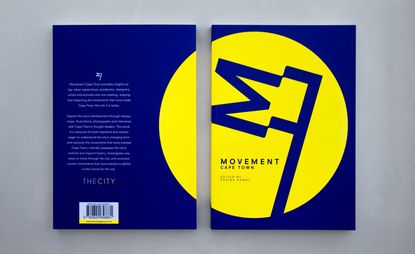
'Movement creates cities,' is the message within a new series of publications released this month by South African publisher The City. Focusing on Cape Town, Johannesburg and Durban – three cities that have witnessed dramatic social, political and geographical changes in recent decades – the titles explore these urban centres through all forms of movement - from people to ocean tides.
'Movements have affected the look, feel and progress of cities in particular and interesting ways,' says the Movement series' editor and founder of the research organisation Designing_SouthAfrica, Zahira Asmal. 'They infuse cities with energy and give them their individuality, their idiosyncrasies, and their joie d’vivre.'
Penned by a stable of urban thinkers and writers who have contributed photographs, essays, interviews and infographics, the three new full-colour format publications aim to capture a slice of each cities' soul by tracking their economic, political, spatial, social and cultural movements.
While Durban is presented as a graphic posterzine that looks at what movement meant to a number of the city's key residents, Cape Town and Johannesburg are explored in greater depth, each with their own dedicated book, Movement Cape Town and Movement Johannesburg. The mix of compelling insights and narratives includes maps, historical and contemporary imagery, store listings and directories that are, Asmal tells us, designed to appeal to both the visitor and the resident. 'In developing these books, it was important for me to publish material for both residents and tourists in order to encourage people to explore and move through cities on equal terms,' says Asmal. 'To read these cities through movements - past and present - in order to make their own movements in the future - whether social, spatial, cultural, political or economic in order to make our cities better places to live in, work and visit.'
In Movement Cape Town, essays include Saarah Jappie's exploration of the movement of language, Ilze Wolff writes about the modern movement in architecture, while Rashiq Fataar, Bettina Woodward and Heinrich Wolff document the spatial movements in both the planned and lived cities.
We see how the restriction of movement continues to have an effect on the way many residents and visitors experience and take part in the city in the series' second book, Movement Johannesburg. Guy Trangoš, Alex Parker, Magas Pather, Julie-Ann Tyler and Melinda Silverman assess the city’s history, delving into its colonial and apartheid past and exploring the lasting aftershocks, while urban taxi experiences are expressed graphically by Rendani Nemakhavani.
The three publications follow on from The City Agency's 'Reflections & Opportunities' - a book that documents the social, economic and architectural implications of an event like the FIFA World Cup on an emerging economies such as Brazil.
Wallpaper* Newsletter
Receive our daily digest of inspiration, escapism and design stories from around the world direct to your inbox
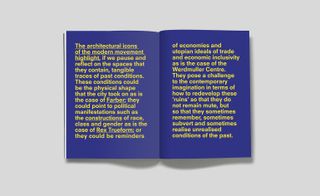
Penned by a stable of urban thinkers and writers and edited by founder of the research organisation Designing_SouthAfrica, Zahira Asmal together with architect and writer Guy Trangoš, the three new full-colour format publications cover Cape Town, Johannesburg and Durban
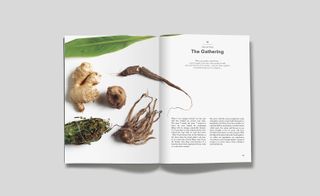
While Durban is presented as a graphic posterzine that looks at what movement meant to a number of the city's key residents, Cape Town and Johannesburg are explored in greater depth, each with their own dedicated book, Movement Cape Town and Movement Johannesburg.
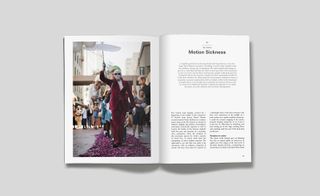
In Movement Cape Town, essays include Saarah Jappie's exploration of the movement of language, Ilze Wolff writes about the modern movement in architecture, while Jay Pather reflects on the ''Infecting the City' festival and performance art in public spaces.
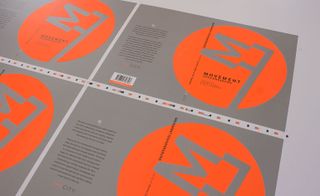
Movement Johannesburg examines how the restriction of movement continues to have an effect on the way many residents and visitors experience and take part in the city.
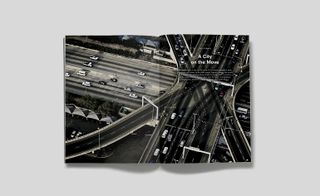
Guy Trangoš, Alex Parker, Magas Pather, Julie-Ann Tyler and Melinda Silverman assess the city’s history, delving into its colonial and apartheid past and exploring the lasting aftershocks, while urban taxi experiences are expressed graphically by Rendani Nemakhavani.

The mix of compelling insights and narratives, Asmal tells us, is designed to appeal to both the visitor and the resident.
INFORMATION
Movement, is available from The City website
Movement Cape Town: Editor: Zahira Asmal. Contributing Editor: Ilze Wolff. Book Design: Michael Tymbios and Richard Quintal. Cover Design: Richard Quintal
Movement Johannesburg: Editor: Zahira Asmal. Co-editor: Guy Trangoš. Book Design: Richard Quintal
-
 Inside Valentino’s glamorous new Sloane Street store, inspired by the art of haute couture
Inside Valentino’s glamorous new Sloane Street store, inspired by the art of haute coutureThe latest in Valentino’s ‘The New Maison’ store concept opens on London’s Sloane Street this week, offering an enveloping marble and carpet-clad space of ‘intimacy and uniqueness’
By Jack Moss Published
-
 Aesop’s Salone del Mobile 2024 installations in Milan are multisensory experiences
Aesop’s Salone del Mobile 2024 installations in Milan are multisensory experiencesAesop has partnered with Salone del Mobile to launch a series of installations across Milan, tapping into sight, touch, taste, and scent
By Hannah Tindle Published
-
 Dial into the Boring Phone and more smartphone alternatives
Dial into the Boring Phone and more smartphone alternativesFrom the deliberately dull new Boring Phone to Honor’s latest hook-up with Porsche, a host of new devices that do the phone thing slightly differently
By Jonathan Bell Published
-
 Marcio Kogan’s Studio MK27 celebrated in this new monograph from Rizzoli
Marcio Kogan’s Studio MK27 celebrated in this new monograph from Rizzoli‘The Architecture of Studio MK27. Lights, camera, action’ is a richly illustrated journey through the evolution of this famed Brazilian architecture studio
By Jonathan Bell Published
-
 ‘Interior sculptor’ Christophe Gevers’ oeuvre is celebrated in new book
‘Interior sculptor’ Christophe Gevers’ oeuvre is celebrated in new book‘Christophe Gevers’ is a sleek monograph dedicated to the Belgian's life work as an interior architect, designer, sculptor and inventor, with unseen photography by Jean-Pierre Gabriel
By Tianna Williams Published
-
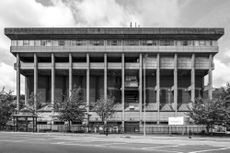 Flick through ‘Brutal Wales’, a book celebrating concrete architecture
Flick through ‘Brutal Wales’, a book celebrating concrete architecture‘Brutal Wales’ book zooms into a selection of concrete Welsh architecture treasures through the lens of photographer Simon Phipps
By Ellie Stathaki Published
-
 Architecture books to inspire shelf love
Architecture books to inspire shelf loveHere at Wallpaper*, we’ve got architecture books piling up; among them, these are the photographic tomes, architects’ monographs and limited editions that we couldn’t resist
By Ellie Stathaki Published
-
 Pioneering modernist Henry Kulka's life and career tracked in limited-edition monograph
Pioneering modernist Henry Kulka's life and career tracked in limited-edition monographCzech-New Zealand architect Henry Kulka, a man who spread modernist ideals half way around the world, is celebrated in Giles Reid and Mary Gaudin’s richly illustrated monograph
By Jonathan Bell Published
-
 Nordic architecture explored in Share, a book about contemporary building
Nordic architecture explored in Share, a book about contemporary buildingDiscussions about Nordic architecture and contemporary practice meet in a new book by Artifice, Share: Conversations about Contemporary Architecture – The Nordic Countries
By Ellie Stathaki Published
-
 London Feeds Itself: we are hungry for Open City's book on food and architecture
London Feeds Itself: we are hungry for Open City's book on food and architectureLondon Feeds Itself, a new book by Open City, is a scrumptious offering that connects food culture and architecture
By Nick Compton Last updated
-
 The Sustainable City chronicles London’s eco design innovation
The Sustainable City chronicles London’s eco design innovationUrban areas provide the best environment for ultra-low-impact living; that's the premise of Harriet Thorpe’s new book, The Sustainable City, which brings together the architecture that's shaping London’s quiet green revolution
By Jonathan Bell Last updated